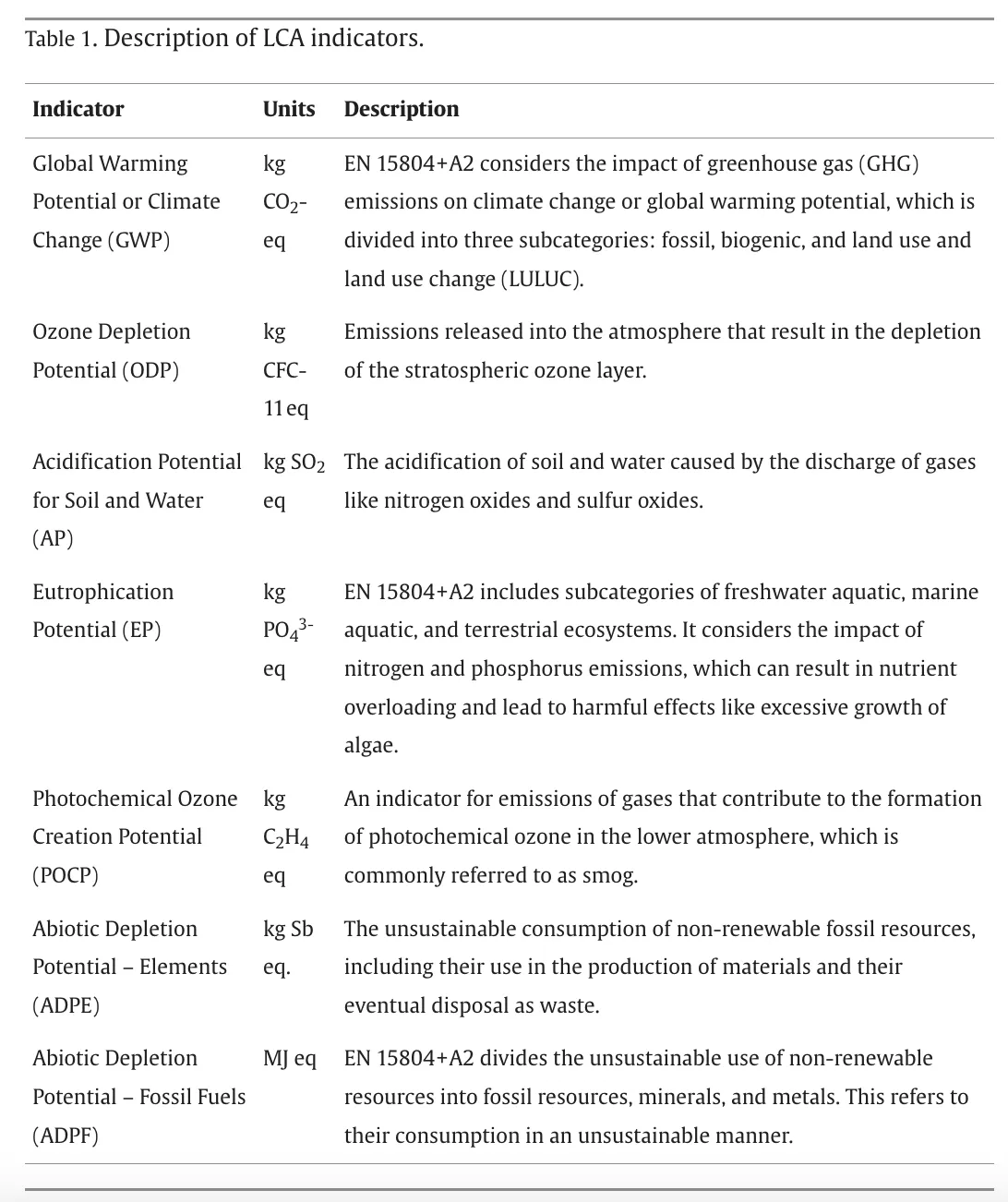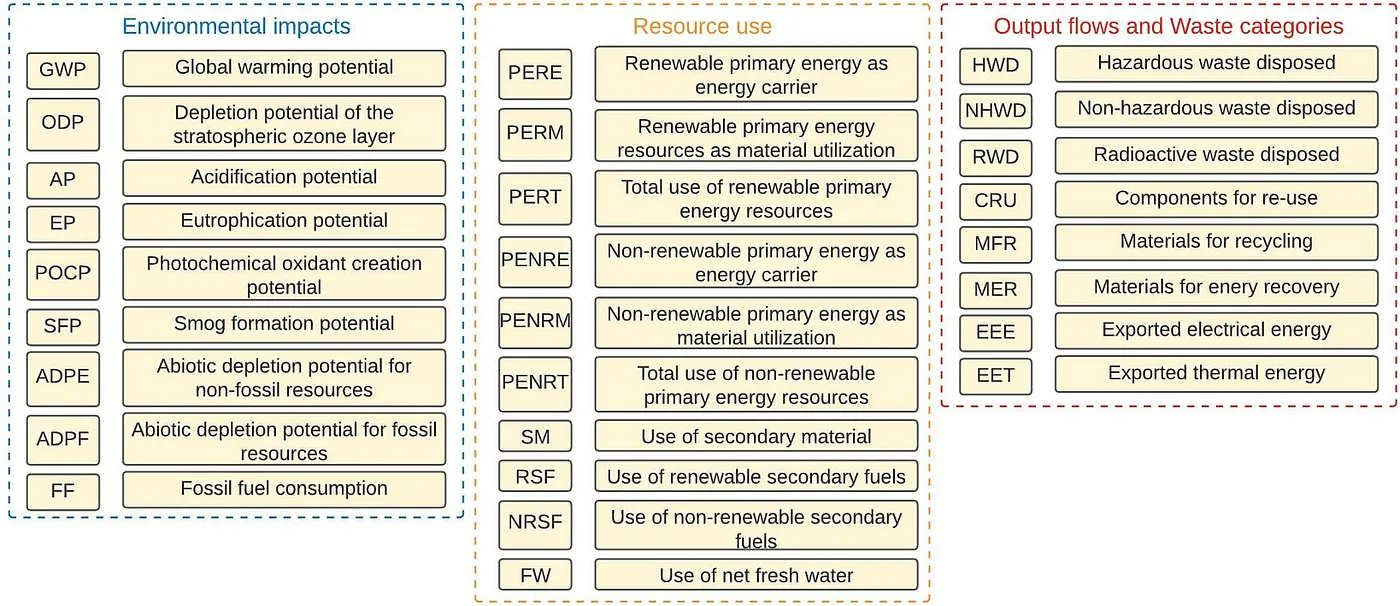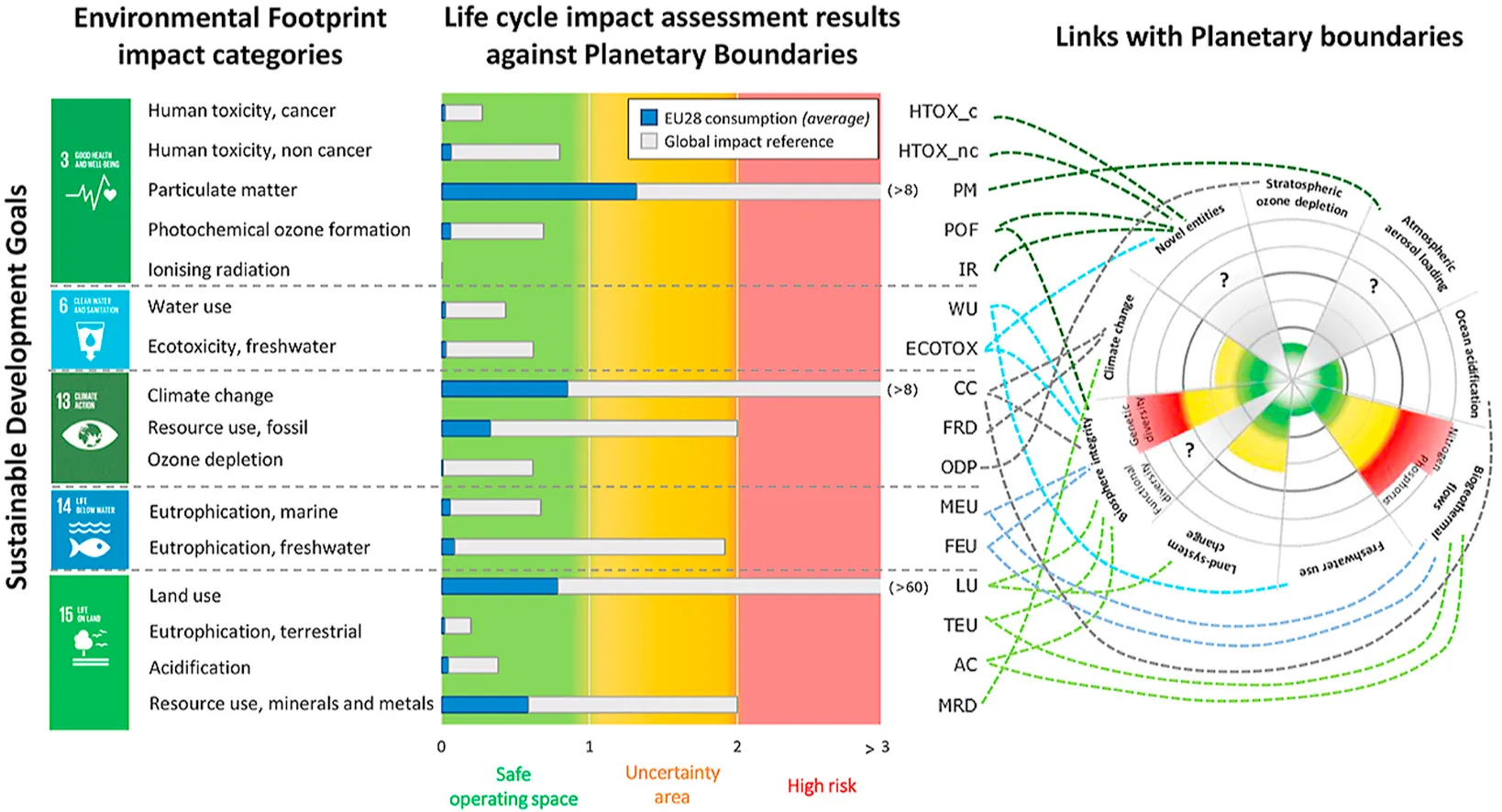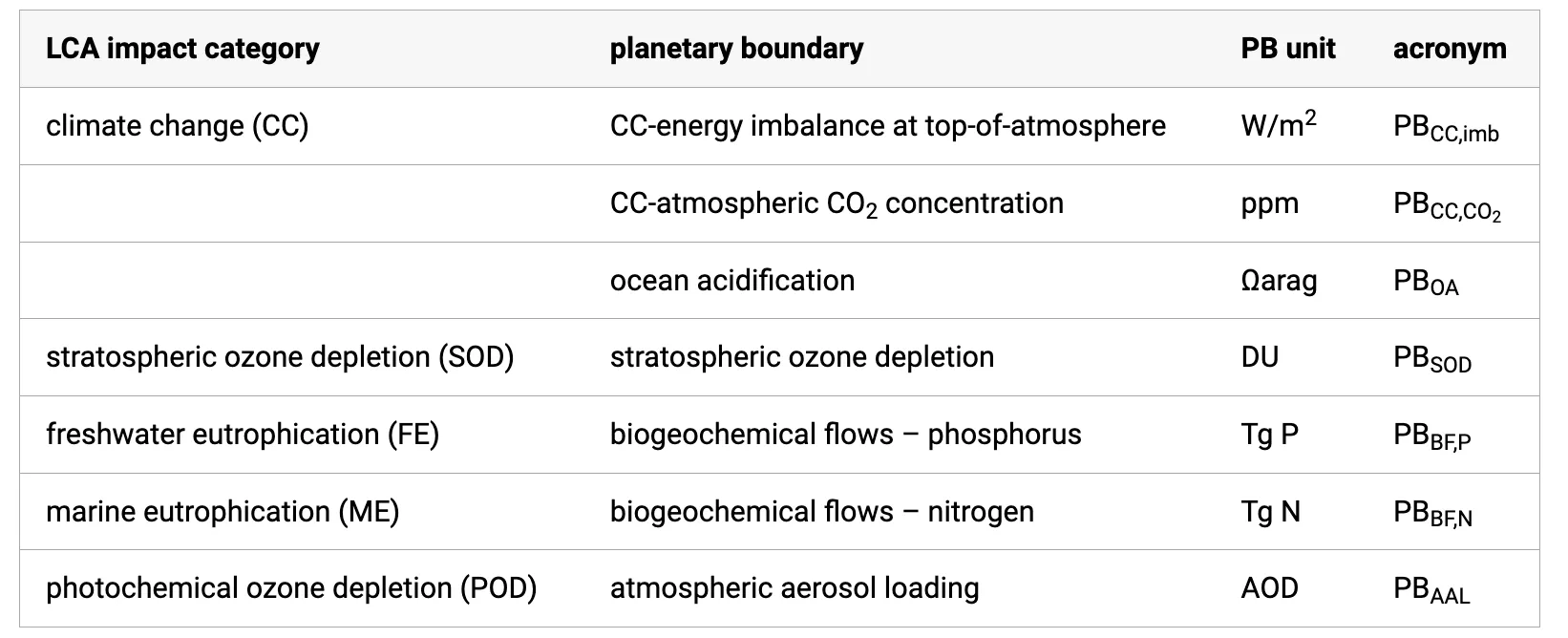What else is in an EPD beyond Carbon, anyway?
Introduction to Environmental Product Declarations (EPDs)
Environmental Product Declarations (EPDs) are key tools in the sustainability arena, providing a standardized way of measuring the environmental impact of a product or service. They go beyond just looking at carbon emissions, encompassing a wide range of environmental metrics. This article delves into the various components of an EPD, shedding light on its importance and the various elements that are often overshadowed by the focus on carbon.
Understanding the Concept of EPDs
Before delving into the components beyond carbon, it’s essential to understand what EPDs are. An EPD is a standardized document that provides quantifiable environmental data for a product, based on a predefined set of criteria. This process involves a life cycle assessment (LCA) that evaluates a product’s impact from cradle to grave — from raw material extraction to disposal.
EPDs are grounded in the methodology of Life Cycle Assessment (LCA), which evaluates the environmental impacts associated with all the stages of a product’s life from raw material extraction through materials processing, manufacture, distribution, use, repair and maintenance, and disposal or recycling. This approach ensures a thorough understanding of a product’s environmental impact.
The Importance of EPDs in Sustainable Development
In today’s environmentally conscious world, EPDs serve as a critical tool for manufacturers, suppliers, and consumers. They enable better decision-making, fostering the development and selection of more sustainable products. For companies, they are an essential part of environmental stewardship and corporate social responsibility.
The Broad Spectrum of Environmental Impacts in EPDs
Beyond Carbon: A Holistic View
While carbon footprint, or greenhouse gas (GHG) emissions, is a critical aspect of environmental impact, EPDs delve into other crucial areas. This includes aspects like water and energy usage, waste generation, resource depletion, and air and water pollution.
Key Environmental Indicators in EPDs
An EPD typically includes information on:
- Energy use and efficiency
- Content of materials
- Water use and efficiency
- Solid waste
- Emissions related to air, soil, and water pollution
- Resource depletion, including raw materials and fossil fuels
- Biodiversity impacts
- Social impacts, in some comprehensive assessments

These indicators collectively provide a more nuanced and complete picture of a product’s environmental footprint, beyond just its carbon emissions.

Fig. 4. Information categories presented in EPDs. (source)
Water Usage and Conservation
One significant aspect that EPDs cover is water usage and conservation. This includes the amount of water used during the production process and the impact on water bodies. By assessing water footprint, companies can implement strategies to reduce water consumption and prevent water pollution, contributing to more sustainable water management.
Resource Depletion
EPDs also evaluate the rate at which resources are used, focusing on non-renewable resources like minerals and fossil fuels. This helps in understanding the sustainability of resource usage and encourages the shift towards more renewable and sustainable alternatives.
Waste Generation and Management
Waste management is another critical element assessed in EPDs. This involves looking at the types and amounts of waste generated during a product’s life cycle, including hazardous and non-hazardous waste. Proper assessment guides companies in minimizing waste production and promoting recycling and reuse.
Air and Soil Pollution
Besides carbon emissions, EPDs examine other forms of air pollution, like sulfur oxides (SOx), nitrogen oxides (NOx), and particulate matter. These pollutants can have significant environmental and health impacts. Soil pollution is also assessed, considering how production processes and waste disposal affect soil quality and ecosystem health.
Biodiversity Impact
The impact on biodiversity is an essential part of EPDs. This includes evaluating how a product’s life cycle affects ecosystems and wildlife. It’s crucial for preserving natural habitats and ensuring that production processes do not lead to a decline in biodiversity.
Chemical Usage and Toxicity
EPDs often assess the chemicals used in the manufacturing process, focusing on their potential environmental and health impacts. This includes the toxicity of materials, their potential for bioaccumulation, and their impact on air, water, and soil quality.
Social and Economic Factors
While primarily environmental, some EPDs also consider social and economic factors, such as the impact of production on local communities, worker safety, and fair labor practices. These aspects are crucial for a holistic understanding of a product’s sustainability.
Energy Consumption and Efficiency
Energy consumption and efficiency are central to EPDs. This includes not only the amount of energy used but also the type of energy (renewable vs. non-renewable) and the efficiency of energy use throughout the product’s life cycle.
Durability and Lifespan
The durability and lifespan of a product are crucial for understanding its long-term environmental impact. EPDs assess how long a product lasts and its potential for reuse or recycling, contributing to a circular economy.
Connecting EPD outputs to Planetary Boundaries
Connecting Environmental Product Declaration (EPD) outputs to Planetary Boundaries is an emerging approach that aligns the environmental impacts of products with the broader context of global ecological limits. The Planetary Boundaries framework, first introduced in 2009, identifies nine critical thresholds beyond which Earth’s key biophysical systems could undergo irreversible changes. These boundaries include climate change, stratospheric ozone depletion, ocean acidification, biogeochemical flows, global freshwater use, land system change, loss of biosphere integrity, introduction of novel entities, and atmospheric aerosol loading【16†source】【17†source】【18†source】【19†source】【20†source】.
EPDs, which provide detailed information on the environmental impact of products, including their carbon footprint, resource use, and pollution levels, can be integral in assessing how products contribute to transgressing these planetary boundaries. For instance, the carbon emissions detailed in an EPD directly relate to the climate change boundary, which is defined by a CO2 concentration in the atmosphere of less than 350 ppm and a maximum change of +1 W/m² in radiative forcing. Exceeding this threshold risks destabilizing the climate system, leading to extreme weather events and other ecological disruptions.

Similarly, EPDs that indicate high levels of nitrogen and phosphorus emissions can be linked to the disruption of the biogeochemical cycles of these elements, one of the planetary boundaries. Excessive nitrogen and phosphorus, often from agricultural sources, contribute to water pollution, eutrophication of freshwater bodies, and ocean anoxia, pushing these systems beyond their natural limits. The quantification of these emissions in EPDs can inform strategies to mitigate such impacts and help maintain the delicate balance of these vital nutrient cycles.

Furthermore, EPDs that reveal significant water usage in product manufacturing can be related to the global freshwater use boundary. This boundary is concerned with the amount of renewable freshwater resources used by human activities, which has drastically increased, especially for agriculture and industrial uses. Excessive water withdrawal can disrupt the natural water cycle and adversely affect ecosystems, underlining the importance of sustainable water management practices informed by EPD data.
In conclusion, connecting EPD outputs to planetary boundaries provides a comprehensive understanding of how individual products contribute to larger environmental challenges. This approach underscores the need for sustainable production and consumption practices to ensure that humanity operates within the safe limits of our planet’s life-support systems. By aligning EPD data with the planetary boundaries framework, businesses, policymakers, and consumers can make more informed decisions that support the resilience and stability of Earth’s critical systems.
EPD — A Tool for Transparency and Improvement
In conclusion, EPDs are much more than just a measure of carbon footprint. They provide a comprehensive view of a product’s environmental impact, covering various factors from water usage to social implications. This transparency is not just beneficial for consumers but also for manufacturers, enabling them to identify areas for improvement and drive sustainable practices. By understanding and utilizing the full scope of EPDs, companies can make significant strides towards a more sustainable future.
Frequently Asked Questions
1. How do EPDs contribute to sustainable development?
Environmental Product Declarations (EPDs) contribute to sustainable development by providing transparent and detailed information about the environmental impact of products. This allows consumers to make informed choices, encouraging companies to adopt more sustainable practices and reduce their ecological footprint across various factors such as resource use, waste management, and pollution.
2. Can EPDs influence product design?
Yes, EPDs can significantly influence product design. By highlighting areas where a product has a substantial environmental impact, manufacturers can redesign products to be more sustainable. This might involve using more eco-friendly materials, improving energy efficiency, or enhancing the recyclability of the product.
3. Are EPDs mandatory for all products?
EPDs are not mandatory for all products. However, for certain products, especially in the building and construction sector, EPDs are increasingly becoming a requirement, particularly in projects that aim for green building certifications like LEED or BREEAM.
4. How do EPDs assess the impact on biodiversity?
EPDs assess the impact on biodiversity by evaluating how the production, usage, and disposal of a product affect ecosystems and wildlife habitats. This can include the impact on land use, water bodies, and the overall health of ecosystems.
5. Can EPDs help in achieving carbon neutrality?
EPDs can aid in achieving carbon neutrality by providing detailed insights into the carbon footprint of products. Companies can use this information to implement strategies to reduce carbon emissions, such as optimizing energy use, sourcing renewable energy, or investing in carbon offset projects.
6. How reliable are the data in EPDs?
The data in EPDs are generally reliable as they are based on standardized methods and verified by third parties. However, the accuracy can vary depending on the quality of data provided and the rigor of the assessment process. Regular updates and adherence to international standards are crucial for maintaining the reliability of EPDs.
Conclusion
Environmental Product Declarations (EPDs) go far beyond just measuring carbon emissions; they offer a comprehensive overview of a product’s environmental impact across various dimensions. From water and energy usage to social and economic considerations, EPDs provide a multi-faceted approach to understanding sustainability. They not only foster transparency but also drive innovation and improvement in product design and manufacturing processes. As consumers and industries become increasingly eco-conscious, the role of EPDs in promoting sustainability and influencing purchasing decisions becomes ever more critical.
 Remember: Sustainability is not just about reducing carbon emissions; it’s about considering the entire environmental impact of what we produce and consume. EPDs serve as a vital tool in this journey towards a more sustainable future.
Remember: Sustainability is not just about reducing carbon emissions; it’s about considering the entire environmental impact of what we produce and consume. EPDs serve as a vital tool in this journey towards a more sustainable future.
What 2050 Materials is doing to make all this information digestible
2050 Materials’ unique blend of expertise in architecture, data science, sustainability, and construction allows us to offer unparalleled insights in the built environment. The API-first approach we’ve taken ensures easy integration with existing systems, making the adoption of sustainable practices more accessible and efficient for the Architecture, Engineering, and Construction (AEC) industry.
Currently, we are working to turn the complex and vast data from EPDs into relatable metrics that the AEC industry can use to make informed decisions from a holistic sustainability standpoint. If you are interested in finding out more, reach out!
For those interested in learning more about how 2050 Materials is revolutionizing sustainable construction, or to explore their platform, visit our website at www.2050-materials.com
Sign up to our platform for free and start making more EPDs.
Related articles

Climate-Resilient Materials for the Built Environment: A Data-Centred Prime
As climate volatility intensifies, resilience metrics are fast becoming as critical as carbon data in material selection. This article outlines why adaptation is now a design imperative, how materials can be evaluated through a systems lens, and what KPIs project teams should demand. From self-healing concrete to fire-rated façades, we present a structured taxonomy of resilient materials, explain how to embed this intelligence into digital design workflows, and propose next steps for specification, benchmarking, and procurement.
Read more
The Most Interesting Low Carbon Products in Office Design
In this article and collection, we highlight 11 outstanding products that contribute to a lower carbon footprint in office design.
Read more
Top Low Carbon Building Boards: Performance, Benefits, and Use Cases
The building boards highlighted in this article and collection showcase low-carbon innovation in modern construction.
Read more